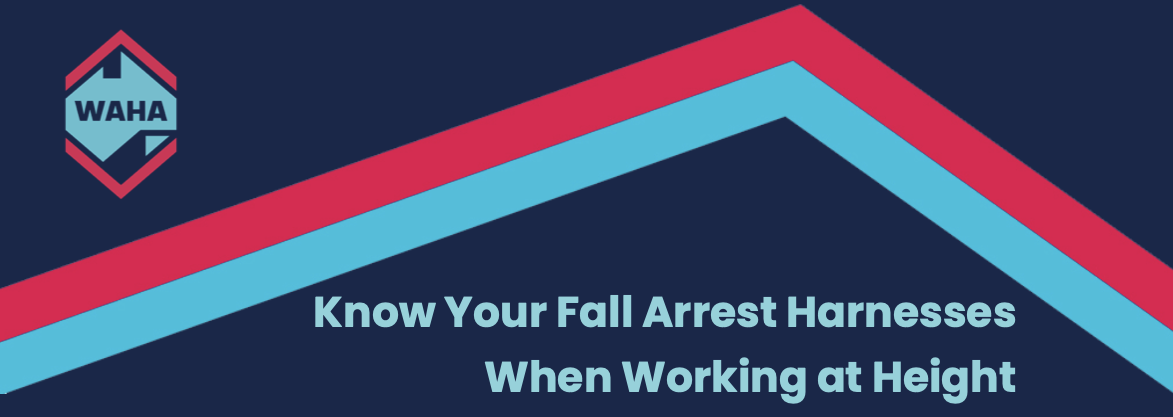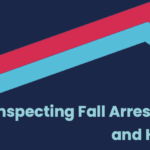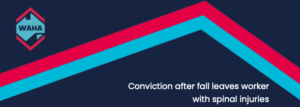
By Richard Millar, Chief Executive Officer, Working at Height Association
When working at height, what different types of safety harnesses exist? How do these operate? What mistakes are common when wearing/operating with safety harnesses? What are the consequences of these? What are the right ways to use safety harnesses?
Personnel working at height in the construction industry are required by the Regulator to be trained in the safe use of working at heights equipment to ensure they have the appropriate skills to carry out tasks safely.
Training is to be provided to workers by competent persons to ensure appropriate instruction on the proper use, type(s) of harness, wearing, storage and maintenance of fall arrest PPE with an understanding of the risks associated with working height.
Such training should provide an understanding of the type of harnesses and lanyards that may be used to help support the worker limiting the risk of a fall from height. Following training, there should be assessment to ensure the worker has the appropriate skills, knowledge and experience to undertake work at height. Refresher training should also occur on a regular basis.
There are varying styles of fall arrest harnesses that can be worn to protect the worker, and whilst we refer to these harnesses as fall arrest harnesses the worker should be using the harnesses to position themselves into work restraint or positioning: when a worker places themselves into this type of positioning they are removing the immediate risk of a fall and a person’s ability to get into a place where they can fall.
A) Fall Arrest Work Positioning – Working in Restraint
The principle of work in restraint is best illustrated through diagrams. It is simplest form, working in restraint means the means by which a person is ‘restrained’ or prevented from being able to get into a place where a fall can occur.


When work tasks require a safety harness to be worn, the practice of work in restraint is to be used wherever possible to reduce the injury risk from a fall.
B) Work positioing via suspension (e.g. Confined space entry).
For work that may be required to be completed in a confined space, it may be suitable to lower a person into the environment utilising a man-rated mechanical winching system. This is called working in suspension, as the person is literally suspended in the air when the tasks are being complete. Working in suspension in this way means that a rescue can be performed easily by a stand-by rescuer, winching the person to safety.

C) Rope Access Work Positioning
A rope access technician has the primary intention of accessing a location in a vertical plane, by positioning themselves to perform work whilst suspended in a harness. This method of access requires specialty equipment and more important significant training to be effective. Rope access involves the use of twin ropes – one which is the primary or main working rope line, the second being the redundant, secondary line that acts as an emergency line in the event of a mainline failure.
Note; Persons undertaking confined spaces work, or rope access work must attain additional qualification(s) to be deemed competent.
Harnesses and harness connection points
The harness attachment points are the unsung hero on a full body harness. Without a way to connect the worker to a fall protection system or anchorage point, the full body harness would be useless. Different fall protection applications want different types of connection points. Fall protection equipment will only work properly when it is used correctly. There are three primary points of attachment, depending on the type of harness and are used depending on the type or work being undertaken.
- Ventral – commonly a point of attachment at the waist
- Sternal – commonly a point of attachment at the chest
- Dorsal – commonly a point of attachment at the back
There are also additional attachment points, depending on the harness and application.
To reduce the misuse of a full body harness, we are going to explain the most common types of harness connection points, where they are located, and how they are meant to function.
FALL ARREST
The connection point used for fall arrest purposes is usually a D-ring that is located on the back of the harness between the shoulder blades. This location is ideal for fall arrest purposes because it evenly distributes the forces of fall arrest across a person’s body. The dorsal D-ring will typically be connected to a shock absorbing lanyard or a self-retracting lanyard, depending on the location. However, other forms of fall arrest devices can also be attached to the dorsal D-ring.
WORK POSITIONING
A harness that is designed for work positioning may have a single, or a pair of D-rings located in the lower waist area at the front of the harness. This type of fall protection allows a worker to have both of their hands free to work while they remain connected to the work area. It should be noted that this system is not the same as fall arrest, but instead this system is a form of fall restraint.
TRAVEL RESTRAINT
If workers need to access an area that is near a fall hazard, a safety manager may decide to use a travel restraint system. A harness designed for travel restraint functions will usually have a D-ring in the centre of the back at waist-level. When a harness is connected in this area, a worker will have reduced access to a potentially dangerous area at height. A worker will usually be connected to an anchorage location with a lanyard that is long enough to allow them to access the work area, but not long enough to allow them to access a fall hazard.
DESCENT / ASCENT
If a worker needs to be raised or lowered into a work area, their harness will need to have a descent or ascent connection point. Connection points for descent or ascent are either a single D-ring between the waist and chest or a pair of D-rings at the waist level. These connection points are used to raise or lower a person into or out of a work area. Often times, this harness will also have a dorsal D-ring to allow for a fall arrest device to be connected.
EVACUATION
Harnesses that can be used for evacuation procedures can typically be identified by a pair of D-rings on the shoulders or at the chest level. Usually, there will be a place where a spreader bar can be added to the harness to help distribute the weight of a worker while they are either raised or lowered onto a safe working level. An evacuation harness is slightly different from a harness that can be used for ascent or descent because the evacuation harness is meant for very brief periods of use.
LADDER CLIMBING
Harnesses that can be used with a ladder climbing safety system will have either a single D-ring or a pair of D-rings at chest level. These harnesses are designed to connect to a ladder fall protection system so that a worker can have fall arrest while working on a ladder. This particular harness attachment is designed to keep a worker relatively close to the ladder to improve the success of the ladder fall arrest device.
Generally speaking, the work environment for which the harness is needed will dictate the number and location of the harness attachment points. Different harness attachment points will help you identify the ways in which the harness can be used. If you need a harness that can perform in a certain way or assist with a certain function, it’s important to find a harness that has the appropriate connection points for what you are trying to accomplish
In conclusion; due to the variety of harnesses in the market, it is vital to ensure workers are appropriately trained to use the equipment, and that the equipment selected is appropriate to the task.
Additional information about the harnesses is provided by the manufacturer, including use, maintenance and inspection guidance.
By Richard Millar, CEO, Working at Heights Association
The Working at Height Association of Australia (WAHA)
Established in 2009 in response to the industry’s demand for a peak body to provide information and support for businesses needing to address working at height issues.
Working at height is a risk that affects people not only working g above ground level – it also affects those working below ground – essentially anywhere there is a risk of a fall form one level to another.
Therefore, work in confined spaces is an area off focus for the association, forming a category to address these specific issues in 2016.
The WAHA is there essentially dedicated to the ongoing development of the highest standards of equipment and operational competency of all persons working height and in confined spaces.
Richard Millar
Chief Executive Officer WAHA
In a Career spanning 42 years in fall protection,
In 1976 Rick assisted in the development and original drafting of Australian/New Zealand Standard AS/NZS1891.1 Series and AS/2626: 1982 originally the precursor for AS/NZS1891.4 Care and Use of Fall protection equipment as part of the SF015 committee, and has taken the position of drafting leader on that committee and more recently been appointed Chairman of the International Standards ISO/TC94/SC4 committee for fall protection.
Rick is presently CEO and Technical Chair of the Working at Heights Association
**************************************************
Article originally posted for Sourceable.






